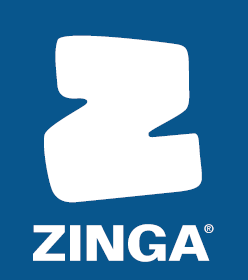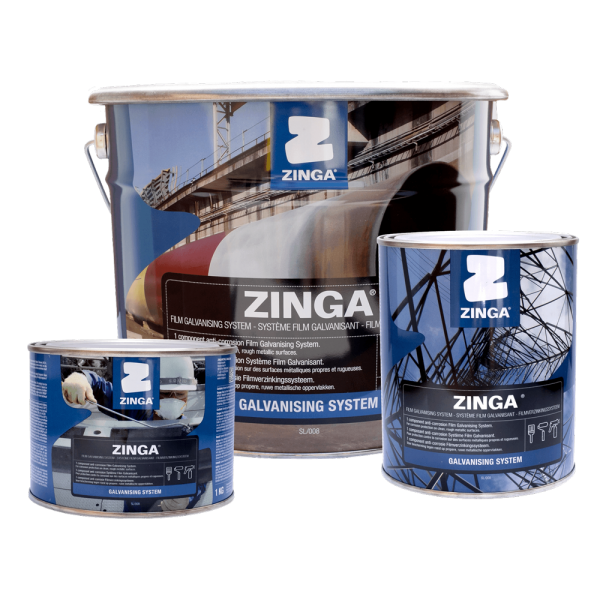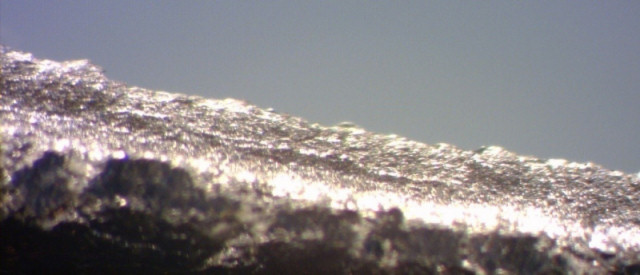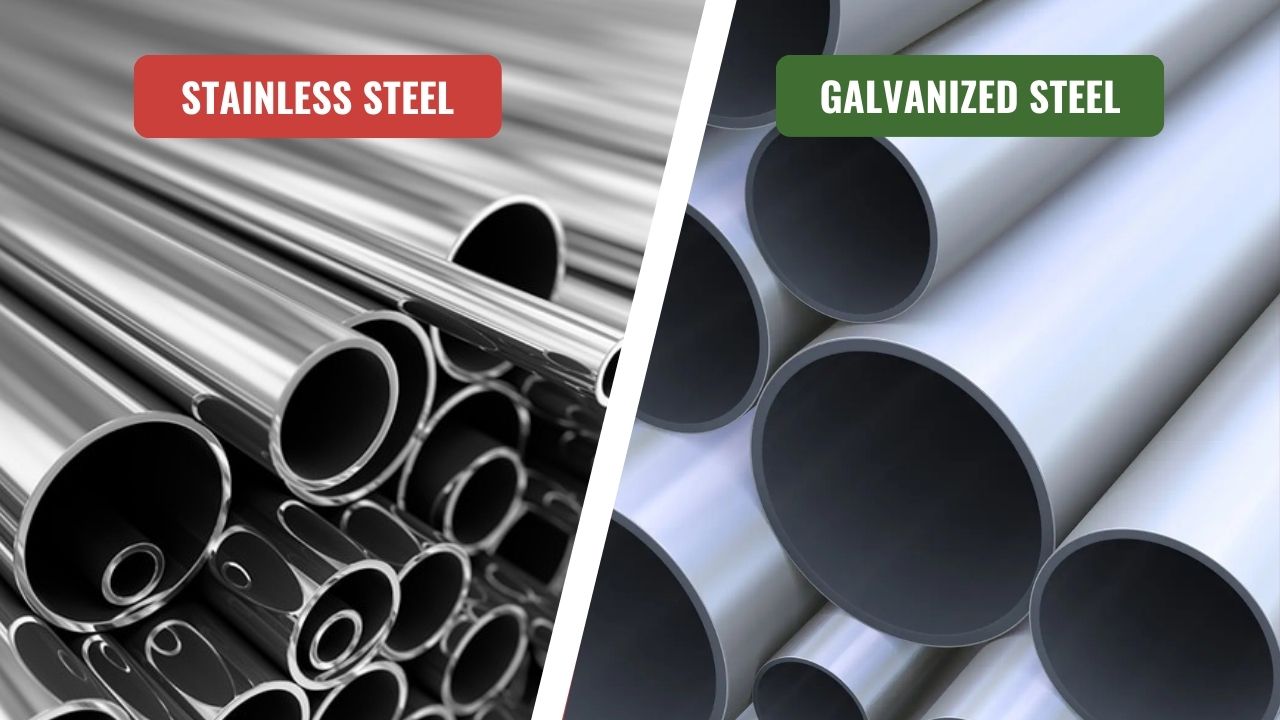
ZINGA® VS PAINT
|
ZINGA® VS PAINT
|
|
ZINGA® |
PAINT |
|
Active
Cathodic Protection |
|
ZINGA® has the most important advantage that it
offers a real cathodic (galvanic) protection. ZINGA® has a concentration of
96% special zinc in its dry layer which gives it its galvanic characteristics.
The film galvanizing system ZINGA® (also called “Zinganization®“) distinguishes
itself from cold galvanization because of its higher quality. Only the application
method of ZINGA® can be compared to traditional paint products, and not its
protective properties. |
|
Not even paints with a relatively high zinc
content can provide cathodic protection. It has been scientifically proven
that a concentration of at least 92% of distilled zinc in the dry film is
required to rightfully use the terminology “cathodic protection throughout
the dry layer”. Most of these zinc rich paints have only a small percentage
of zinc, which does not guarantee a galvanizing protection throughout the
layer. |
|
For more information please see “How
Does It Work?” |
|
Easy
Application On Site |
|
ZINGA® can be applied in the same way as
paints. |
|
Paints can be applied on site using a brush or
roller or spraying (airless, conventional). |
|
For more information please see “Application?” |
|
ZINGA® |
PAINT |
|
Reloadable |
|
|
A cured ZINGA® layer, will reliquidize if a new
layer of ZINGA® is applied. This ensures the creation of 1 ZINGA® layer with
a continuous electrochemical contact between the Zinc particles and thus
galvanic protection. If the ZINGA® layer is very old, the Zinc salts on the
surface (ensuring a passive protection), need to be removed to ensure
complete reliquidization; this can be obtained by performing a light sweep
blast. |
|
Apart from reversible paints (e.g. vinyl
paints), most paints cannot be overcoated with a paint without creating two
separate layers. This can cause interlayer moisture and consequently
weakening of the system. If a painted steel structures needs to be repainted,
the entire structures needs to be blast cleaned. |
|
For more information please see “Characteristics
/ Advantages” and “Application?” |
|
Overcoatable |
|
ZINGA® can be overcoated with a fast drying,
compatible paint. Care should be taken to avoid affection of the Zinc layer
by aggressive solvents of the topcoat. |
|
Protective paint systems mostly consist of 2 or
3 layers of paints; combining different types of paints to create a solid
barrier layer and a decorative colored finish. |
|
For more information please see “Overcoating
of ZINGA®” |
|
Application
Under Extreme Circumstances |
|
ZINGA® can be applied in a wide variety of
weather conditions. The application surface temperature range is from -15°C
to +40°C with a maximum humidity of 95% so long as the dew point is 3°C above
the steel temperature. |
|
Most paints have rather small windows of application.
This includes window ranges of ambient temperature, relative humidity and/or
steel temperature. Only specialized paints (which are more expensive) can be
used in less favorable conditions, limiting the application frame in which
structures can be coated. |
|
Unlimited
Shelf Life |
|
ZINGA® has unlimited shelf life. This means it
is possible to always have ZINGA® in storage for touch up or for future
projects. |
|
Most paints have a shelf life of between 1 and
3 years. This prevents long storage of paints for touch ups. |
|
Contact
With Potable Water |
|
ZINGA® only contains non-toxic elements in its
dry layer (after evaporation of the solvent). Therefore it can be, and has
been, used in contact with potable water. Since the ZINGA® remains active, it
produces Zinc salts which dissolve in the water. This can sometimes lead to
small precipitations in the water, which are however nontoxic. To avoid this,
we recommend to wash the surface very thoroughly with fresh water. For more
information, contact a Zingametall representative. |
|
Only highly specialized paints can be used in
contact with potable water. Since most paints use xylene, toluene or M.E.K.
solvents, these cannot be used in contact with potable water as this poses
threat to human health. |
|
ZINGA® |
PAINT |
|
Flexible
Layer |
|
|
ZINGA®, containing 96% Zinc in the dry layer
has very few binder. In fact, not every Zinc particle is completely
surrounded by resin. This also explains why the ZINGA® layer is rough and
porous. However, this is why ZINGA® behaves like a metal when it comes to impact
and bending. An impact will simply push away and compress the Zinc particles,
not “breaking” the ZINGA® layer. |
|
Paints are formed by adding pigments and other
components to a resin. Generally, the pigments take in only a small part of
the paint; therefore the pigments are completely surrounded by resin. As the
resin cures, it becomes a solid, strong product. However, this is also
brittle. Upon impact, the resin will show cracks, creating a breach in the
barrier that form the protection of a paint. |
|
Welding
On Coated Steel |
|
Zinganized® steel can be welded without the
release of any toxic fumes (tested according BS 6853) and with a very small
burn back. |
|
Steel that has been coated with a paint cannot
be welded unless the paint is removed in that area. Most paints release toxic
fumes upon welding and leave a burn back (area where the paint is burned away
by the welding) that is extensive. |
|
Structure
Keeps Its Form During Application |
|
ZINGA® is applied under ambient temperature and
does not deform the structure. |
|
Paints are applied under ambient temperature
and do not deform the structure. |

-2721-p.png)







0 Comments